From inside (document excerpt):
Operating Manual 1.2 cfm (at 60 Hz) Models 15234/15226/15296 Two-Stage Vacuum Pump For use with refrigerants R-12, R-22, R-500, R-502, or R-134a PARTS IDENTIFICATION INLET “TEE ” FITTING BLACK EXHAUST PLUG (NOTE VENT HOLE) INLET CAP 1 RED SHIPPING PLUG (REMOVE AND DISCARD) GAS BALLAST VALVE /2 ” ACME INLET (R-134a) 1 /4 ” MFL INLET (R-12, 22, 500, 502) OIL LEVEL SIGHT GLASS WARNING! Use separate manifolds and hoses for R-134a systems.
Heating, Ventilating and Air Conditioning User Manual Free Download. HAVC Operator’s Manual. Auto AC Free Instruction Manual Download PDF.
Crosscontamination with other refrigerant types will cause severe damage to the A/C systems and to service tools and equipment. Do not mix refrigerant types through a system or in the same container! For use on A/C systems using CFCs, HCFCs, and HFCs in conjunction with mineral oil, ester oil, alkylbenzene oil, and PAG oil as lubricants. Not for use with ammonia or lithium bromide systems. Not for use with flammable refrigerants. 2 2000, SPX Corporation INTRODUCTION Your vacuum pump has been factory tested and meets Robinair’s stringent quality standards. This high performance pump will provide you with years of trouble-free service if you follow these instructions for operating and maintaining the pump. The pump’s offset rotary vane design provides high efficiency operation. The motor is properly sized to ensure 32o F (0o C) starting at 90 percent of the rated voltage. And the inlet “tee ” fitting lets you use one pump for R-12, R-22, R-500, R-502, and R-134a systems. Be careful when removing the pump and contents from the shipping carton. If there is any apparent shipping damage to the pump, the shipping company should be notified immediately and the container saved for inspection. OPERATING INSTRUCTIONS WARNING! Wear safety goggles when working with refrigerants. Contact with refrigerant can cause eye injury. 1. Remove and discard the red shipping plug at the top of the finned reservoir. 2. Fill the pump reservoir to the “OIL LEVEL ” line on the sight glass on the front of the pump. Use the oil packaged with the vacuum pump or fresh Robinair Premium High Vacuum Pump Oil, available at your supplier. 3. Install the black plastic operating exhaust plug. Note that the operating plug is notched to allow exhaust flow. CAUTION! Do not attempt to operate the pump with the exhaust port plugged. To do so could result in permanent damage to the pump or could cause the plug to be blown from the pump reservoir. 4. Note the electric motor voltage rating, and connect to the proper power source. CAUTION! Avoid the use of extension cords. An extension cord may overheat and cause fire. If you must use an extension cord, use the shortest possible cord with a minimum size of 14 AWG. You are now ready to remove the inlet cap for the appropriate inlet (1/4 ” for R-12, R-22, R-500, and R-502; 1/2 ” Acme for R-134a) to connect the pump to the air conditioning system. Follow the system manufacturer’s directions for evacuation. Vacuum Pump Models 15234/15226/15296 3 USING THE GAS BALLAST (Vented Exhaust) All Robinair high vacuum pumps feature a gas ballast for more thorough evacuation and longer pump life. As vapors from an A/C or refrigerant system containing more than the average amount of moisture pass through a vacuum pump, they condense into liquid, and combine with the vacuum pump oil. When these vapors mix with the oil, it becomes contaminated, raises the vapor pressure of the vacuum pump oil, and reduces the pump’s ability to reach its ultimate attainable vacuum. Opening the ballast valve purges a small amount of atmospheric air through the exhaust chamber.


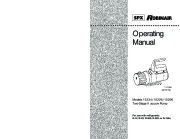 Robinair SPX 1 2 Cfm At 60 Hz 15234 15226 15296 Two Stage Vacuum Pump Owners Manual - 1 of 8
Robinair SPX 1 2 Cfm At 60 Hz 15234 15226 15296 Two Stage Vacuum Pump Owners Manual - 1 of 8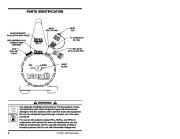 Robinair SPX 1 2 Cfm At 60 Hz 15234 15226 15296 Two Stage Vacuum Pump Owners Manual - 2 of 8
Robinair SPX 1 2 Cfm At 60 Hz 15234 15226 15296 Two Stage Vacuum Pump Owners Manual - 2 of 8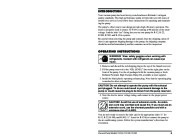 Robinair SPX 1 2 Cfm At 60 Hz 15234 15226 15296 Two Stage Vacuum Pump Owners Manual - 3 of 8
Robinair SPX 1 2 Cfm At 60 Hz 15234 15226 15296 Two Stage Vacuum Pump Owners Manual - 3 of 8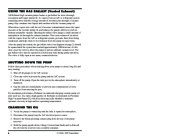 Robinair SPX 1 2 Cfm At 60 Hz 15234 15226 15296 Two Stage Vacuum Pump Owners Manual - 4 of 8
Robinair SPX 1 2 Cfm At 60 Hz 15234 15226 15296 Two Stage Vacuum Pump Owners Manual - 4 of 8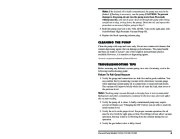 Robinair SPX 1 2 Cfm At 60 Hz 15234 15226 15296 Two Stage Vacuum Pump Owners Manual - 5 of 8
Robinair SPX 1 2 Cfm At 60 Hz 15234 15226 15296 Two Stage Vacuum Pump Owners Manual - 5 of 8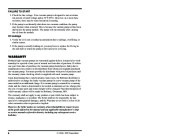 Robinair SPX 1 2 Cfm At 60 Hz 15234 15226 15296 Two Stage Vacuum Pump Owners Manual - 6 of 8
Robinair SPX 1 2 Cfm At 60 Hz 15234 15226 15296 Two Stage Vacuum Pump Owners Manual - 6 of 8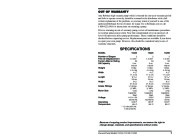 Robinair SPX 1 2 Cfm At 60 Hz 15234 15226 15296 Two Stage Vacuum Pump Owners Manual - 7 of 8
Robinair SPX 1 2 Cfm At 60 Hz 15234 15226 15296 Two Stage Vacuum Pump Owners Manual - 7 of 8 Robinair SPX 1 2 Cfm At 60 Hz 15234 15226 15296 Two Stage Vacuum Pump Owners Manual - 8 of 8
Robinair SPX 1 2 Cfm At 60 Hz 15234 15226 15296 Two Stage Vacuum Pump Owners Manual - 8 of 8